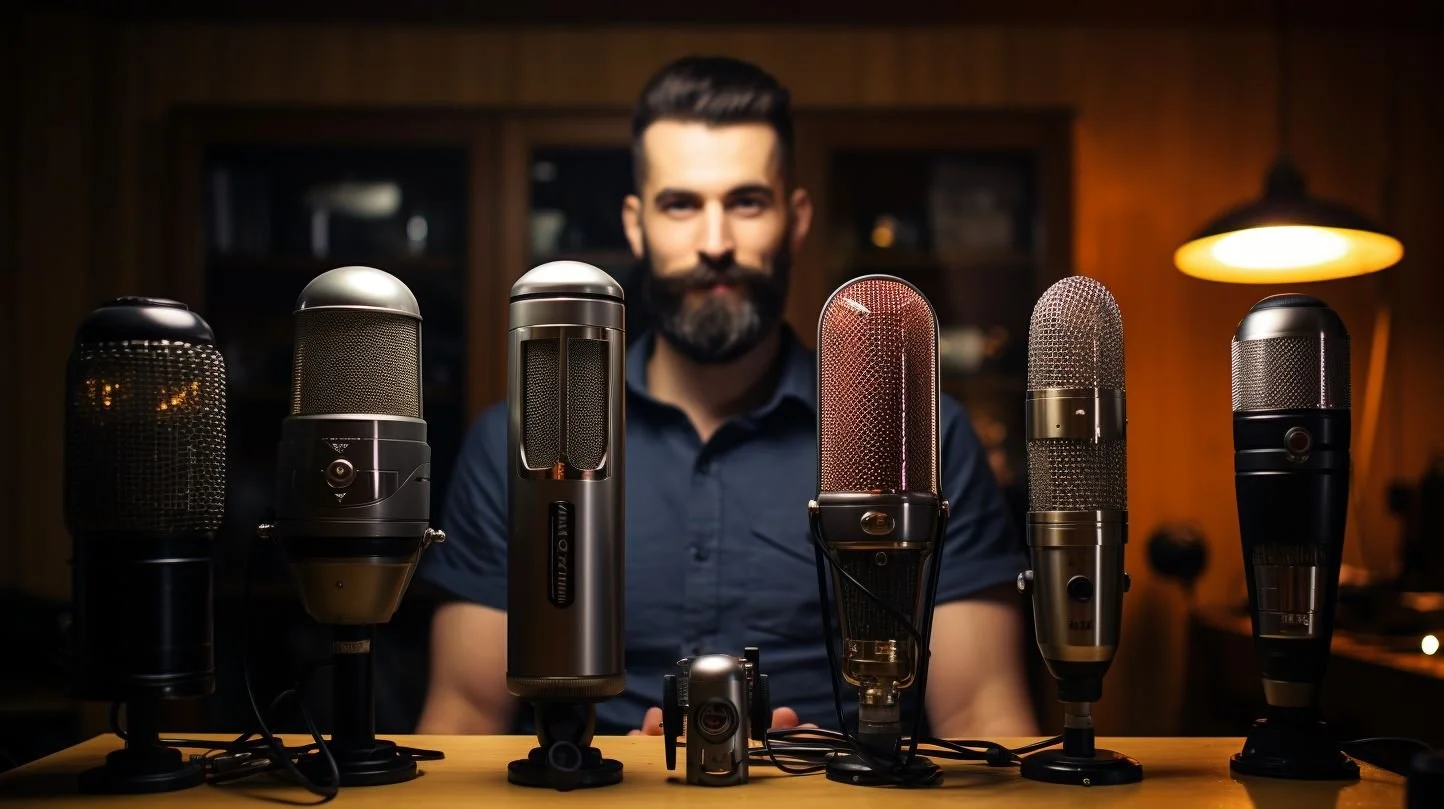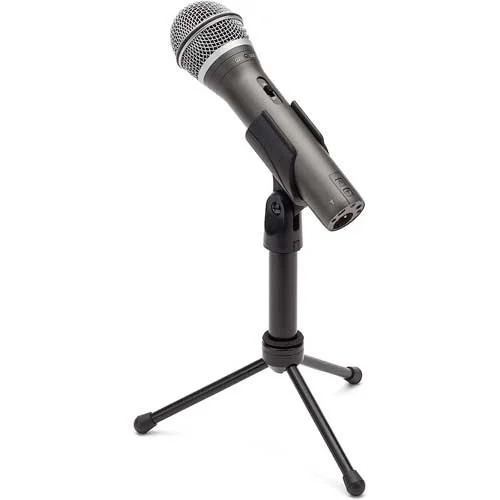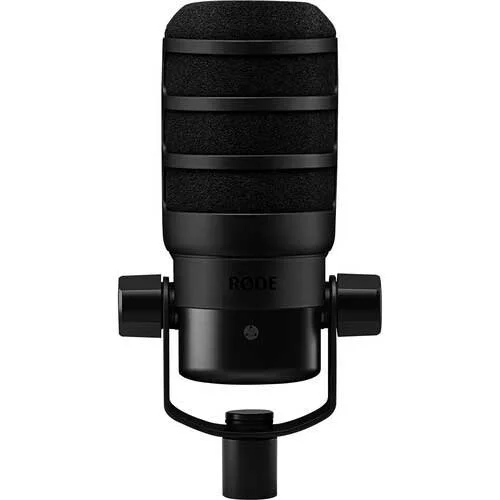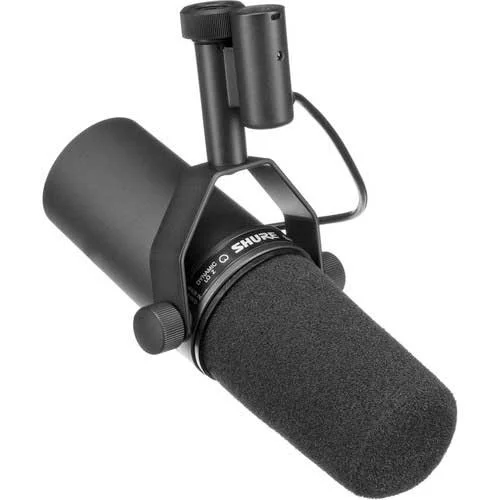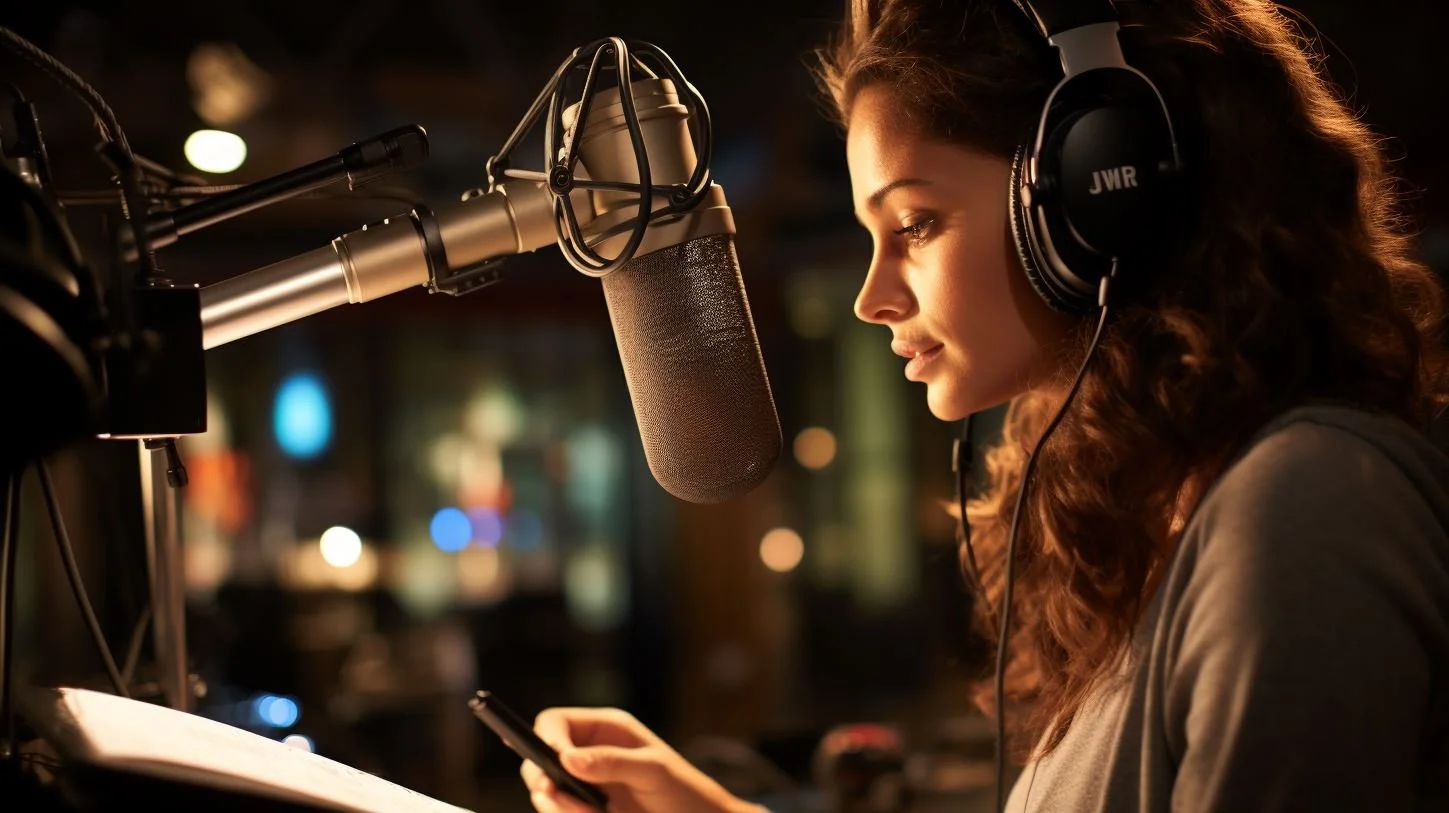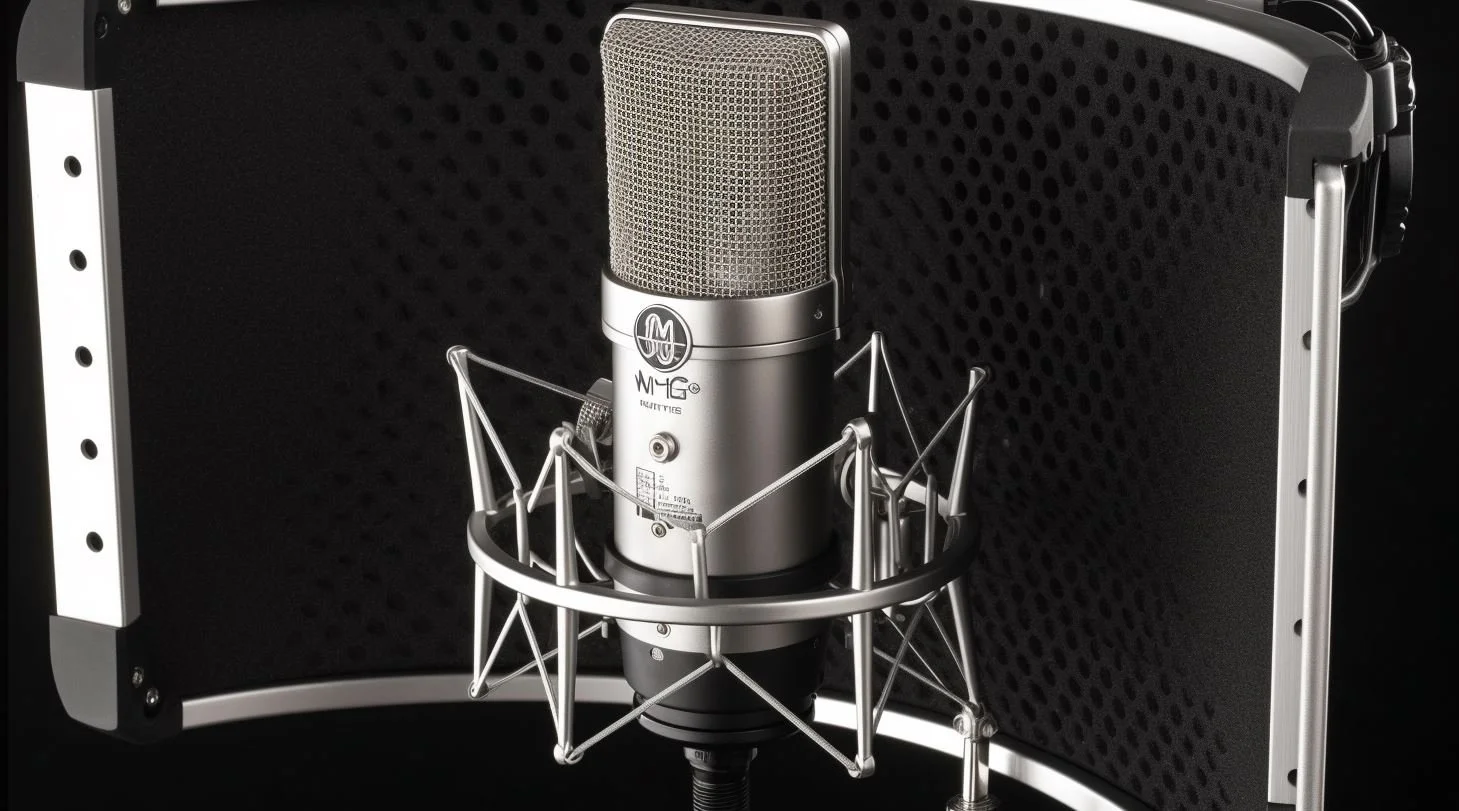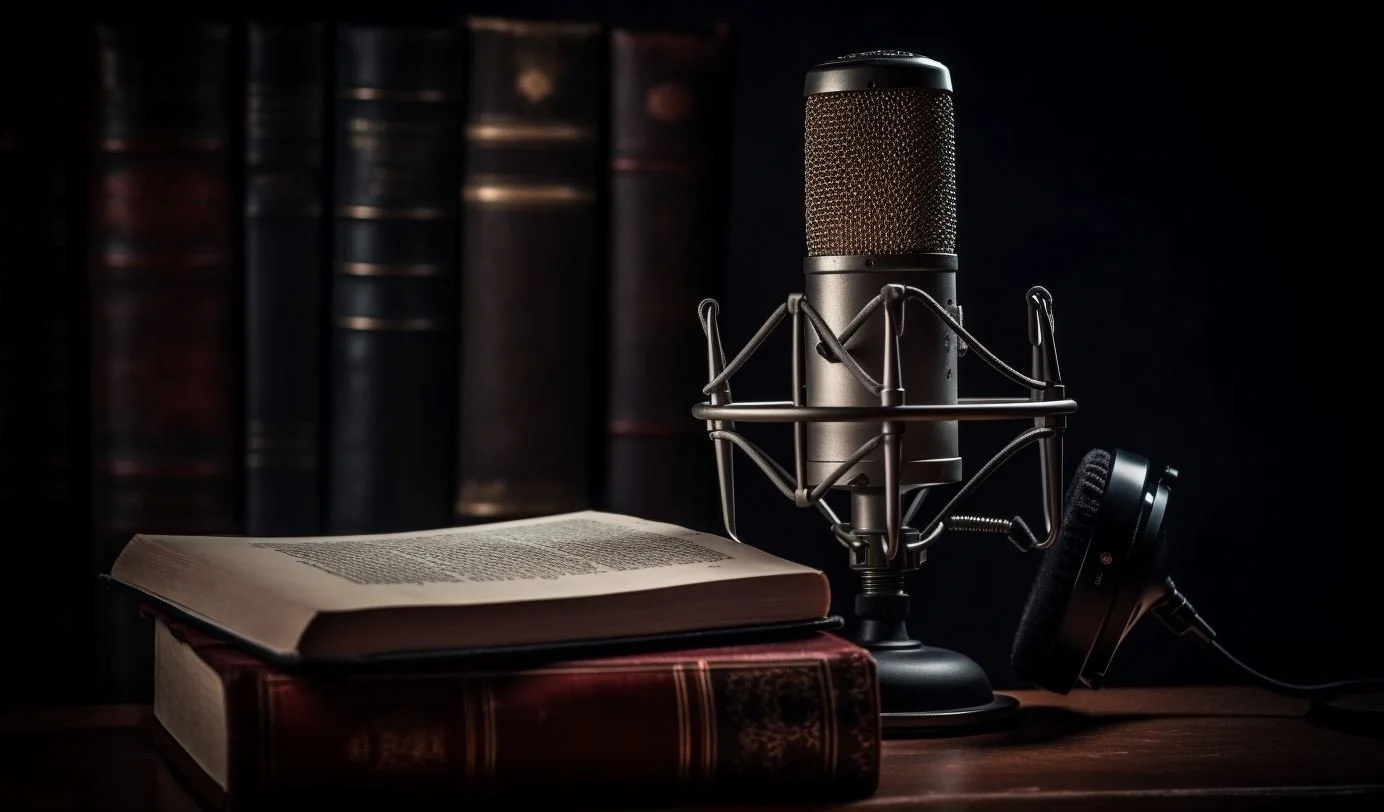Best Microphone With Noise Cancellation
Finding Your Voice: A Practical Guide to Noise-Canceling Microphones
Hey there, content creators! We get it—crisp and clear audio is the name of the game in your world. That's why we've put together the lowdown on the best microphones that not only make you sound awesome but also kick background noise to the curb.
In this guide, we're skipping the tech jargon and diving into the real talk about dynamic mics with killer noise cancellation. From budget-friendly picks like the Samson Q2U to the bang-for-your-buck Rode PodMic USB and the top-tier Shure SM7B, we've got the lowdown on what sets these mics apart.
Curious about dynamic mic gain or wondering how weight and size play into your setup? We've got your back. Our reviews spill the beans on what each mic brings to the table, minus the fluff.
Whether you're a seasoned pro or just starting out, our guide is your roadmap to snagging a microphone that makes you sound great, no matter where you're recording. So, join us as we cut through the noise—literally—and help you find the perfect mic to let your voice shine. Let's get your content sounding as awesome as you are!
Disclaimer: This blog post contains affiliate links. If you make a purchase through one of these links, we may receive a small commission at no additional cost to you. This helps support our work and allows us to continue providing valuable content. Thank you for your support!
Read Before Buying:
Since you’re looking for a microphone with noise cancellation, it’s safe to assume you have unwanted noise in your recording environment (neighbors, refrigerator, air conditioner, pets, fans, etc).
There are two approaches to solving this problem:
Condenser microphone + noise gate + compressor + noise suppression filters
Dynamic microphone
Of the two, using a dynamic microphone is simpler and will always provide better noise-canceling results due to the design of dynamic vs. condenser microphones.
We’ll go into more detail comparing the two later, but basically what you need to know is this:
Condenser microphones are much more sensitive than dynamic microphones by design.
This makes them a poor choice for recording untreated rooms with distracting sounds in the background. Condensers pick up everything!
Dynamic microphones are far less sensitive to these background sounds and will sound much cleaner without any editing.
Simply positioning yourself close to a dynamic mic will eliminate 90% of your noise problems resulting in clear, clean, distraction-free audio. Make sure to get a good boom arm to get your mic in the perfect position (2-6 inches away is ideal).
Save yourself the headache of messing with condensers, noise filters, and latency issues, and just get a dynamic mic. You’ll be happier and sound better.
Quick Picks:
Best Value: Rode PodMic USB - with USB or XLR outputs, the PodMic USB is ideal for the beginner or professional seeking the best bang for their buck.
Best Budget: Samson Q2U - the most popular option for beginners on a budget seeking solid performance without breaking the bank. Includes a full accessory kit to start recording right out of the box.
Premium Option: Shure SM7B - renowned as the best dynamic microphone on the market, the SM7B is for professionals seeking the highest quality recordings.
Comparison:
| Product | Price | Output | Weight | Frequency Range | Sensitivity | Max SPL |
|---|---|---|---|---|---|---|
| Samson Q2U | $ | XLR/USB | 11.2 oz | 50Hz-15kHz | -54 dB | 148 dB |
| Fifine K688 | $ | XLR/USB | 12.5 oz | 70Hz-15kHz | -58 dB | 130 dB |
| Rode PodMic USB | $$ | XLR/USB | 31.7 oz | 20Hz-20kHz | -57 dB | 148 dB |
| Shure MV7 | $$ | XLR/USB | 19.4 oz | 20Hz-20kHz | -55 dB | 132 dB |
| Shure SM7B | $$$ | XLR | 27 oz | 50Hz-20kHz | -59 dB | 180 dB |
Best Dynamic Microphone with Noise Cancellation
(sorted by price from ↓↑)
Best Budget
Samson Q2U
Best for beginners on a budget. Proven reliability and quality sound. Includes robust accessory kit including: desktop stand, XLR cable, USB cable, mic clip.
Best Value
Rode PodMic USB
Best for beginners or professionals wanting USB capabilities for easy setup or XLR option for more complex signal chains.
Best Overall
Shure SM7B
Touted as the best dynamic microphone ever made, the SM7B is built for professionals seeking the highest audio quality.
Buyer’s Guide to Noise Cancelling Microphones
For podcasters, streamers, and content creators looking to minimize distracting background noises, dynamic microphones offer a practical and efficient solution.
Their ability to focus on the intended sound source while rejecting ambient noises, coupled with their durability and lower sensitivity to handling noise and feedback, make them a preferred choice in scenarios where audio clarity is essential, and environmental control is limited.
Understanding Microphone Types
Dynamic Microphones
Construction: Dynamic microphones use a simple design where sound waves hit a diaphragm attached to a coil of wire, placed within the field of a magnet. The movement of the coil within this magnetic field generates the electrical signal.
Durability: These microphones are known for their ruggedness and reliability, able to withstand rough handling and high sound pressure levels.
Noise Isolation: A key feature of dynamic microphones is their natural ability to reject off-axis sounds, making them excellent at isolating the desired sound source from background noise. This is particularly beneficial in uncontrolled environments where background noise can be an issue.
Condenser Microphones
Construction: Condenser microphones use a capacitor to convert acoustic energy into an electrical signal. They require power (phantom power) to operate.
Sensitivity: These microphones are more sensitive and responsive to the "subtleties" of sound, making them ideal in studio settings.
Pickup Patterns: While they can offer various pickup patterns, including cardioid, hypercardioid, and omnidirectional, their sensitivity makes them more prone to picking up ambient sounds.
Why Dynamic Microphones are Better for Noise Cancellation
Directional Pickup Patterns: Dynamic microphones typically have cardioid or hypercardioid pickup patterns. These patterns are designed to capture sound from the front while rejecting sound from the sides and rear. This directional focus is ideal for podcasting, streaming, and content creation, where voice clarity is paramount, and background noise is undesirable.
Less Sensitive: The inherent design of dynamic microphones makes them less sensitive to distant or quiet sounds compared to condenser microphones. This means they are less likely to pick up keyboard typing, room echoes, or street noise.
Handling Noise: Dynamic microphones handle physical handling better. They produce less handling noise compared to condenser microphones, which is an advantage for creators who may need to adjust or move their microphone during a session.
Durability in Diverse Environments: These microphones perform consistently across a variety of environmental conditions – from humid outdoor conditions to air-conditioned indoor studios – without significant changes in performance.
Feedback Resistance: For live streamers or podcasters who might also engage with live audiences in settings where speakers are used, dynamic microphones are less prone to feedback.
Considerations When Choosing a Dynamic Microphone
Sound Quality: While dynamic microphones excellently reject noise, they may not capture the full range of sound frequencies as accurately as condenser microphones. This is generally not a significant issue for spoken word applications but is worth considering.
-
Factors Influencing Dynamic Microphone Sound Quality
1. Frequency Response:
Look for microphones with a balanced frequency response that suits your voice and content. A flat response ensures accurate reproduction of different frequencies without exaggerating or attenuating specific ranges.
2. Sensitivity:
Consider the microphone's sensitivity, which measures its responsiveness to sound. While dynamic microphones are generally less sensitive than condenser microphones, a moderate sensitivity is essential for capturing subtle nuances without being overly prone to background noise.
3. Signal-to-Noise Ratio (SNR):
A higher SNR indicates a cleaner signal. Dynamic microphones with a favorable SNR effectively capture your voice while minimizing the impact of ambient noise.
4. Transducer Type:
Dynamic microphones use a diaphragm attached to a coil of wire within a magnetic field. The efficiency of this transducer design contributes to the overall sound quality. Opt for microphones with well-engineered transducers for superior performance.
5. Polar Pattern:
Choose a microphone with a cardioid or hypercardioid polar pattern for effective noise cancellation. These patterns focus on capturing sound from the front while rejecting unwanted noise from the sides and rear.
6. Durability:
Consider the microphone's build quality and materials. A durable construction ensures longevity and consistent performance in various environments, crucial for content creators on the move.
7. Internal Shock Mounting:
Internal shock mounting minimizes handling noise, ensuring that vibrations and movements do not affect the microphone's performance. This feature is especially important for dynamic microphones used in dynamic recording situations.
8. Low Self-Noise:
Low self-noise is indicative of a clean signal path within the microphone. It ensures that the microphone itself does not contribute unwanted noise to the recording.
9. Impedance Matching:
Check the microphone's impedance to ensure compatibility with your audio interface or mixer. Proper impedance matching contributes to optimal signal transfer and sound quality.
Choosing the Best Dynamic Microphone for Noise Cancellation
Research and Reviews:
Read user reviews and conduct thorough research on dynamic microphones known for their sound quality and noise cancellation capabilities.
Testing in Different Environments:
Whenever possible, test the microphone in various environments to assess its performance in real-world scenarios. Pay attention to how well it rejects background noise.
Consider Budget and Features:
Determine a reasonable budget and prioritize features based on your specific needs. While premium options may offer additional features, there are excellent dynamic microphones available at various price points.
Brand Reputation:
Consider the reputation of the brand and its history in manufacturing quality audio equipment. Established brands often have a track record of producing reliable and high-performing microphones.
Future-Proofing:
Anticipate your future needs and choose a dynamic microphone that can adapt to evolving recording setups or content creation requirements.
Gain Requirements: These microphones often require more gain than condenser microphones. Ensure that your audio interface or mixer can provide sufficient clean gain.
-
Factors Influencing Dynamic Microphone Gain Requirements
1. Sensitivity:
Dynamic microphones are generally less sensitive than condenser microphones. Assess the microphone's sensitivity level to determine the amount of gain required for optimal performance. A moderate sensitivity ensures sufficient responsiveness without excessive noise pickup.
2. Impedance:
Match the microphone's impedance with that of your audio interface or mixer. Proper impedance matching ensures efficient signal transfer and can influence the gain requirements. Check the technical specifications of both the microphone and the recording equipment.
3. Source Distance and Volume:
Consider the distance between the microphone and the sound source. If the source is at a greater distance, higher gain may be necessary. Additionally, assess the volume of the sound source; louder sources may require less gain for adequate recording levels.
4. Recording Environment:
The ambient noise level in your recording environment influences the gain needed. In noisy environments, you may need to increase gain to capture your voice effectively while minimizing background noise.
5. Dynamic Range:
Evaluate the microphone's dynamic range, which is the difference between the quietest and loudest sounds it can capture. A wider dynamic range allows for more flexibility in setting gain levels without sacrificing audio quality.
6. Preamp Quality:
The quality of the preamp in your audio interface or mixer plays a significant role. High-quality preamps can provide clean gain, minimizing the risk of introducing unwanted noise during amplification.
7. Recording Application:
Consider the specific application for which you're using the microphone. For example, podcasters and streamers may need different gain levels based on their recording setups and desired sound quality.
8. User Technique:
The way you use the microphone can affect gain requirements. Proper microphone technique, such as maintaining an optimal distance and speaking directly into the microphone, can impact the amount of gain needed.
Choosing the Best Dynamic Microphone with Appropriate Gain Requirements
Technical Specifications:
Thoroughly review the technical specifications of dynamic microphones, paying attention to sensitivity, impedance, and dynamic range. Ensure compatibility with your recording equipment.
Test in Different Scenarios:
Whenever possible, test the microphone in various recording scenarios to assess its performance under different gain settings. Consider real-world situations to determine the microphone's suitability for your needs.
Consider the Recording Environment:
Take into account the ambient noise level in your recording space. Choose a dynamic microphone that allows you to achieve optimal gain levels while effectively canceling out unwanted background noise.
Seek Professional Advice:
Consult with audio professionals or experts who can provide insights into microphone selection based on your specific requirements. They can offer guidance on matching gain levels for your intended application.
Budget Considerations:
Determine a budget for your microphone purchase and explore options that meet your gain requirements within that budget. There are dynamic microphones available at various price points with different gain characteristics.
Weight and Size: Dynamic microphones can be heavier and bulkier, which might influence mounting and positioning options.
-
Factors Influencing Dynamic Microphone Weight and Size
1. Portability:
Consider the portability of the microphone, especially if you frequently move or travel. A lightweight and compact microphone is ideal for on-the-go creators.
2. Handling and Comfort:
Evaluate the microphone's weight and size in relation to your comfort during extended use. A balanced weight and ergonomic design contribute to a comfortable recording experience.
3. Mounting Options:
Check the mounting options available for the microphone. Different microphones may require specific mounts or shock mounts, affecting the overall size and setup.
4. Usage in Different Environments:
Assess whether the microphone is suitable for various recording environments. For instance, a compact microphone may be preferable in tight spaces, while a larger microphone may provide additional features and better noise isolation.
5. Durability:
Consider the build quality and materials used. A sturdy and durable microphone can withstand the rigors of regular use, providing longevity and consistent performance.
6. Integration with Accessories:
If you use accessories such as boom arms or shock mounts, ensure that the microphone's weight and size are compatible. Some microphones may have specific accessories designed for optimal performance.
7. Aesthetics and Branding:
The visual aspect of the microphone may also be a consideration. Some creators prefer a sleek and minimal design, while others may prioritize a microphone with a distinctive appearance that aligns with their branding.
Choosing the Best Dynamic Microphone Based on Weight and Size
Hands-On Testing:
Whenever possible, physically handle the microphone to assess its weight and size. Consider how comfortable it feels in your hands and whether it aligns with your recording preferences.
Consider Your Recording Setup:
Evaluate your recording setup and the available space. If you have limited space or plan to use the microphone in various environments, a compact and lightweight option may be more practical.
Read User Reviews:
User reviews often provide insights into the practical aspects of using a microphone, including comfort during extended sessions and compatibility with different recording setups.
Explore Accessories:
Check the availability of compatible accessories and assess whether they enhance or hinder the microphone's usability. Some accessories may add weight or size, impacting your overall setup.
Brand Reputation:
Consider the reputation of the brand and its commitment to ergonomic design and durability. Established brands often prioritize user experience in their microphone designs.
Budget Considerations:
Determine a budget for your microphone purchase and explore options within that budget that offer the right balance of weight, size, and features for your needs.
Reviews:
Samson Q2U
The Samson Q2U is the ultimate budget pick for content creators, offering a versatile solution for podcasters, streamers, and voiceover artists seeking an affordable yet high-performing dynamic microphone with noise cancellation capabilities.
Key Features
Dual Connectivity Options: The Q2U provides both USB and XLR connections, offering flexibility for various recording setups, from direct computer connection to professional audio interfaces.
Cardioid Polar Pattern: The cardioid pickup pattern ensures focused recording on the intended sound source while effectively minimizing background noise, making it an excellent choice for noise cancellation.
On-Board Controls: The microphone features on-board controls for headphone volume and on/off switch, providing convenient access for real-time monitoring and easy operation.
Complete Recording Package: The Q2U comes as a recording and podcasting pack, including a desktop tripod stand, mic clip, USB cable, XLR cable, and a limited 2-year manufacturer warranty.
Review
The Samson Q2U impresses with its outstanding performance, especially considering its budget-friendly price point. The dual connectivity options make it incredibly versatile, allowing users to connect directly to a computer via USB for a quick setup or utilize the XLR connection for a more professional recording experience.
The cardioid polar pattern is a standout feature, delivering focused recording with excellent noise cancellation. This makes the Q2U a reliable choice for creators recording in less-than-ideal environments, where ambient noise can be a concern.
The on-board controls add a layer of convenience, allowing users to adjust headphone volume and power the microphone on or off without the need to reach for external controls. This feature proves particularly handy during live recordings or streaming sessions.
The included accessories in the recording pack contribute to the overall value of the Q2U. The desktop tripod stand provides stability, and the mic clip ensures secure mounting. The inclusion of both USB and XLR cables adds to the microphone's versatility, catering to a broad range of users with different recording setups.
Who It's For
The Samson Q2U is an ideal choice for:
Budget-Conscious Creators: Offering an impressive array of features at an affordable price, the Q2U is perfect for those looking to invest in a quality microphone without breaking the bank.
Podcasters and Streamers: With its noise-canceling cardioid polar pattern and dual connectivity options, the Q2U meets the needs of podcasters and streamers seeking clear and professional audio.
Versatile Recording Environments: Whether you're recording in a studio, home office, or on the go, the Q2U's compact size, and included accessories make it adaptable to various recording environments.
In conclusion, the Samson Q2U stands out as a budget-friendly dynamic microphone with noise cancellation capabilities, offering a reliable and versatile solution for content creators across different platforms and recording scenarios.
Rode PodMic USB
The Rode PodMic USB is the best value pick for microphones with noise cancellation, offering a compelling combination of affordability and professional-grade features.
Designed for broadcast, podcasting, web-streaming, and more, the PodMic USB delivers exceptional audio quality in a budget-friendly package.
Key Features
Versatile Connectivity: The PodMic USB provides both USB and XLR connectivity, offering flexibility for various recording setups. This dual-option versatility caters to users seeking a plug-and-play USB solution or those desiring a more intricate XLR connection.
Cardioid Polar Pattern: With a cardioid pickup pattern, the PodMic USB excels at isolating the intended sound source while effectively reducing ambient noise. This makes it an ideal choice for content creators seeking clear and focused recordings.
Headphone Volume Control: The on-board controls include a headphone volume knob, allowing users to adjust monitoring levels on the fly. This feature enhances the real-time monitoring experience during recording sessions.
Wide Frequency Range: Covering a frequency range of 20 Hz to 20 kHz, the PodMic USB ensures a full and detailed representation of audio, capturing the nuances of vocals with precision.
Review
The Rode PodMic USB impresses with its build quality and professional-grade performance, considering its affordable price.
The inclusion of both USB and XLR connectivity options is a standout feature, providing versatility for different recording scenarios.
The cardioid polar pattern delivers effective noise cancellation and focus on the primary sound source. This is particularly advantageous for podcasters and streamers recording in environments with potential background disturbances.
The microphone's dynamic element ensures durability and reliability over extended use.
The on-board headphone volume control adds a layer of convenience for creators, allowing them to monitor their recordings with ease. This feature is especially beneficial for achieving optimal audio levels during live broadcasts or recording sessions.
The wide frequency range of 20 Hz to 20 kHz ensures that the PodMic USB captures a broad spectrum of audio frequencies, resulting in clear and detailed vocal reproduction. Whether you're recording vocals for a podcast or engaging in web-streaming, the microphone excels in delivering a natural and articulate sound.
Who It's For
The Rode PodMic USB is an ideal choice for:
Budget-Conscious Creators: Offering an impressive array of features at an affordable price, the PodMic USB caters to creators seeking a high-value microphone without compromising on performance.
Podcasters and Broadcasters: With its cardioid polar pattern and versatile connectivity options, the PodMic USB is tailored for podcasters, broadcasters, and content creators who prioritize clear and focused vocal recordings.
Users with Varied Recording Setups: Whether you're recording to a computer or a mobile device, the dual USB and XLR connectivity makes the PodMic USB adaptable to various recording setups.
In conclusion, the Rode PodMic USB stands out as the best value pick for dynamic microphones with noise cancellation, offering a cost-effective solution for creators looking to enhance their audio quality without breaking the bank.
Shure SM7B
The Shure SM7B earns its place as the best overall pick for dynamic microphones with noise cancellation, offering unparalleled audio quality and versatility.
Renowned in the industry, the SM7B stands as a reliable choice for professionals and enthusiasts alike.
Key Features
Cardioid Polar Pattern: The SM7B's cardioid pickup pattern ensures precise sound capture, focusing on the source while effectively isolating background noise. This makes it an ideal choice for a wide range of recording applications.
Wide Frequency Range: Covering a frequency range of 50 Hz to 20 kHz, the SM7B captures a comprehensive spectrum of sound, making it suitable for vocals, speech, and various voice-over applications.
Dynamic Element: The dynamic element of the SM7B contributes to its durability and reliability, making it suitable for both studio and live sound environments.
Swivel Stand Adapter: The included swivel stand adapter provides flexibility in microphone positioning, allowing users to find the optimal angle for their recordings.
Broadcast-Style Windscreen: The A7WS broadcast-style windscreen enhances the microphone's noise-canceling capabilities, reducing plosive sounds and minimizing external disturbances.
Detailed Review
The Shure SM7B lives up to its reputation as a go-to microphone for professional audio applications. Its cardioid polar pattern excels in capturing vocals with clarity while effectively rejecting unwanted ambient noise. Whether used in a studio setting or on stage, the SM7B consistently delivers exceptional audio quality.
The wide frequency range ensures that the SM7B captures both low and high-frequency details, providing a natural and balanced sound reproduction. This versatility makes it suitable for a variety of applications, from podcasting and broadcasting to recording vocals for music.
The dynamic element of the SM7B adds a layer of durability, making it resilient to handling noise and ensuring consistent performance over extended use. This makes it a reliable choice for live sound applications where robustness is crucial.
The inclusion of the swivel stand adapter enhances the microphone's usability, allowing users to position it precisely for optimal sound capture. Additionally, the A7WS broadcast-style windscreen further improves noise cancellation, ensuring that plosive sounds and external disturbances are kept to a minimum.
Who It's For
The Shure SM7B is the ideal choice for:
Professional Studios and Broadcasters: With its exceptional audio quality and noise-canceling capabilities, the SM7B is a staple in professional studios and broadcasting environments.
Podcasters and Content Creators: The versatility of the SM7B makes it suitable for podcasters and content creators seeking a reliable and high-performance microphone for clear and professional recordings.
Live Sound Applications: Its dynamic element and robust design make the SM7B perfect for live sound applications where durability and consistent performance are paramount.
In conclusion, the Shure SM7B stands as the best overall pick for dynamic microphones with noise cancellation, offering a combination of outstanding audio quality, versatility, and durability. Whether you're in a studio, on stage, or recording from home, the SM7B proves to be a reliable companion for achieving top-tier audio recordings.

